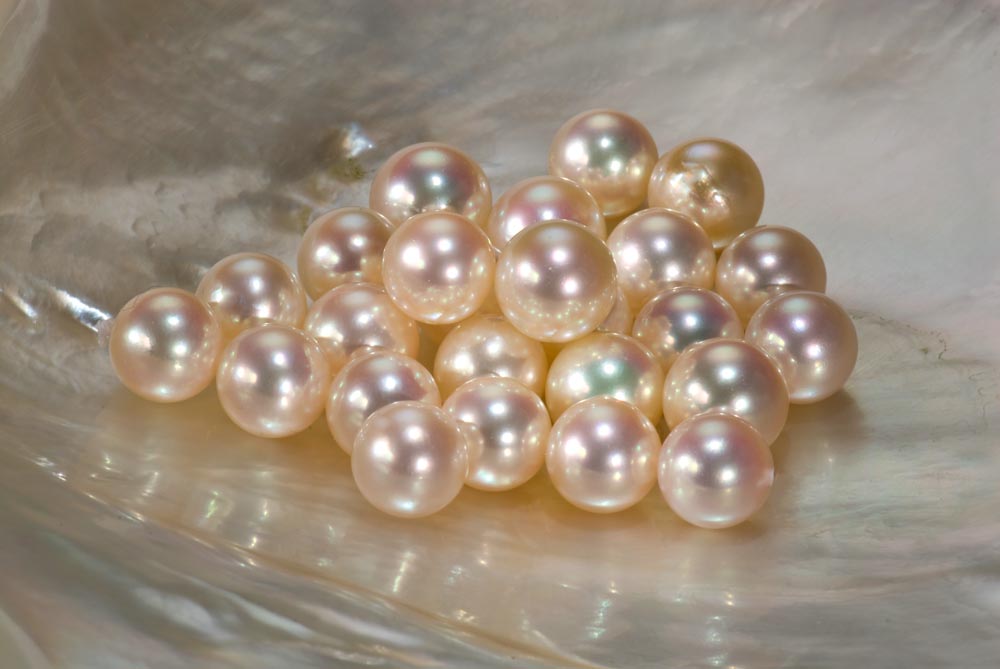
People have revered and coveted pearls, often called stones even though they are not minerals, for millennia. Their iridescent beauty and unique formation have made them symbols of elegance, purity, and wealth. This article delves into the fascinating world of pearl stones, exploring their history, types, formation, and their cultural significance.
A Brief History of Pearl Stones
The allure of pearls dates back to ancient civilizations. Mesopotamian records from 5,000 years ago mention pearls, while the ancient Egyptians believed they were tears shed by the gods. In India, pearls were considered sacred and were often used in religious rituals. The Chinese, too, held pearls in high esteem, associating them with longevity and wisdom.
In the Roman Empire, people used pearls as a symbol of status and wealth, with emperors and their families often wearing them. Cleopatra, the legendary Queen of Egypt, was famous for her lavish pearl jewelry. Pearls remained popular through the Middle Ages and into the Renaissance, when people often used them in intricate designs and settings.
The Formation of Pearl Stones
Unlike most gemstones, pearls are organic creations formed within the bodies of marine mollusks. The process begins when a foreign object, such as a grain of sand or a parasite, enters the mollusk’s shell. To protect itself, the mollusk secretes a substance called nacre, which coats the irritant in layers. Over time, these layers accumulate, forming a pearl.
The type of mollusk and the conditions in which it lives determine the characteristics of the pearl, including its color, shape, and size. Oysters are the most common mollusks used for pearl cultivation, but other species, such as clams and mussels, can also produce pearls.
Types of Pearl Stones
Pearls come in a wide variety of colors, shapes, and sizes. Some of the most common types include:
- Natural pearls form naturally in the wild. They are rare and highly prized.
- Cultured pearls are produced by humans through pearl farming. Farmers grow cultured pearls by inserting an irritant into a mollusk’s shell.
- Akoya pearls are small, round pearls that are typically white or cream-colored. Akoya oysters produce them.
- Tahitian pearls are large, round pearls that are typically black, gray, or peacock green. Black-lipped oysters produce them.
- South Sea pearls are large, round pearls that are typically white, cream, or golden. The giant clam produces them.
The Cultural Significance of Pearl Stones
People have long associated pearls with purity, innocence, and wisdom. Many cultures consider pearls symbols of femininity and elegance. People often give pearls as gifts to celebrate special occasions like weddings, anniversaries, and graduations.
In some religions, people believe pearls have healing properties. For example, in Hinduism, people associate pearls with the moon and believe they have a calming effect on the mind and body. In Chinese culture, people believe pearls ward off evil spirits and promote longevity.
Pearl Jewelry and Accessories
Pearls offer versatility as a gemstone, fitting into a wide variety of jewelry designs. You can wear classic pearl necklaces, earrings, and bracelets with any outfit, as these timeless pieces never go out of style. Contemporary designs often combine pearls with other gemstones or metals.
Beyond jewelry, you can use pearls in accessories like hair clips, brooches, and handbags. You can also incorporate pearls into home decor items, such as lamps, vases, and mirrors.
The Future of Pearl Stones
As the demand for pearls continues to grow, pearl farmers are developing new techniques to produce pearls of higher quality and in a wider variety of colors and shapes. Advances in technology are also making it possible to create synthetic pearls that are indistinguishable from natural pearls.
Despite these developments, the allure of natural pearls remains strong. Their unique beauty and cultural significance ensure that they will continue to be prized and coveted for generations to come.